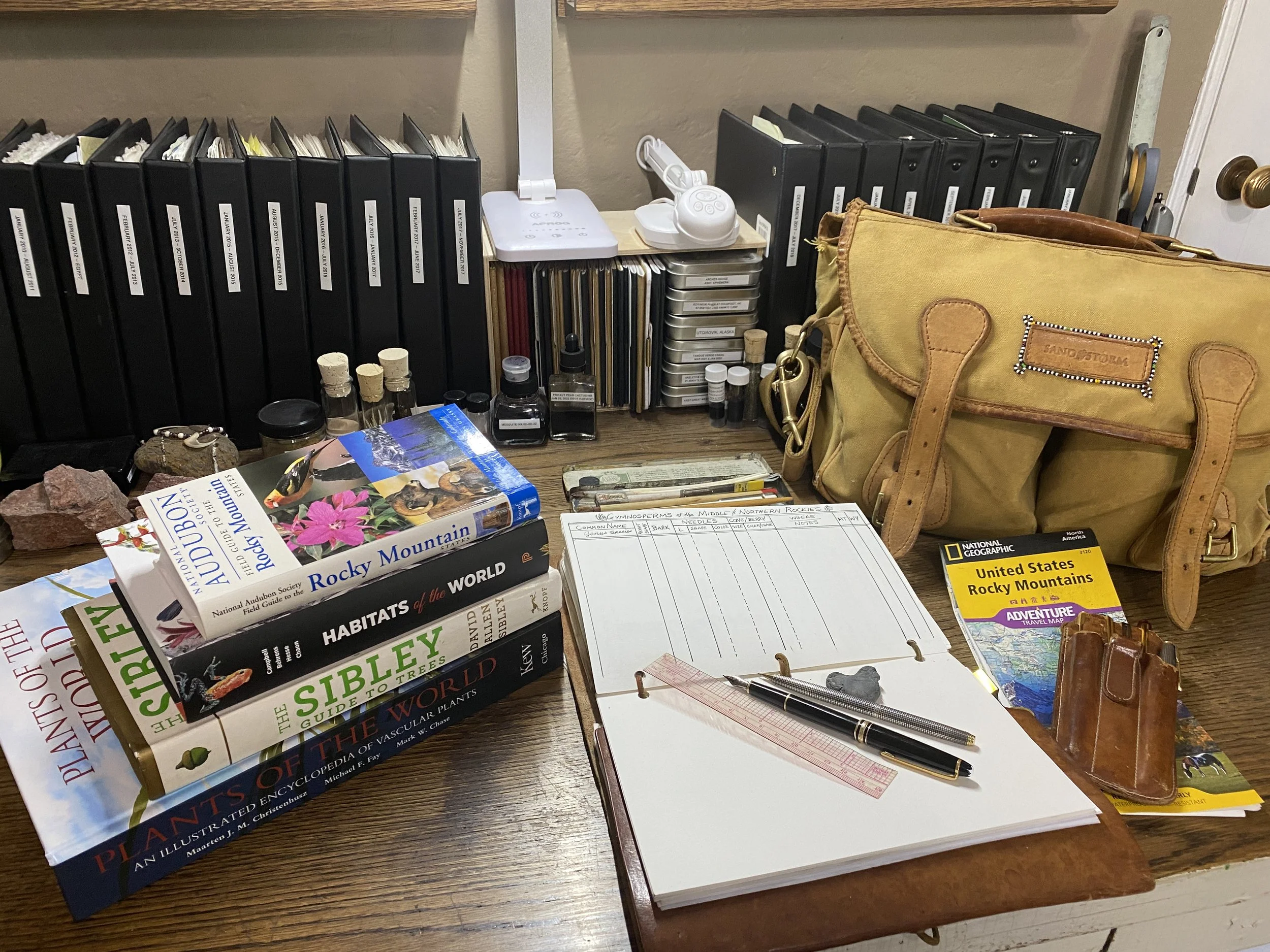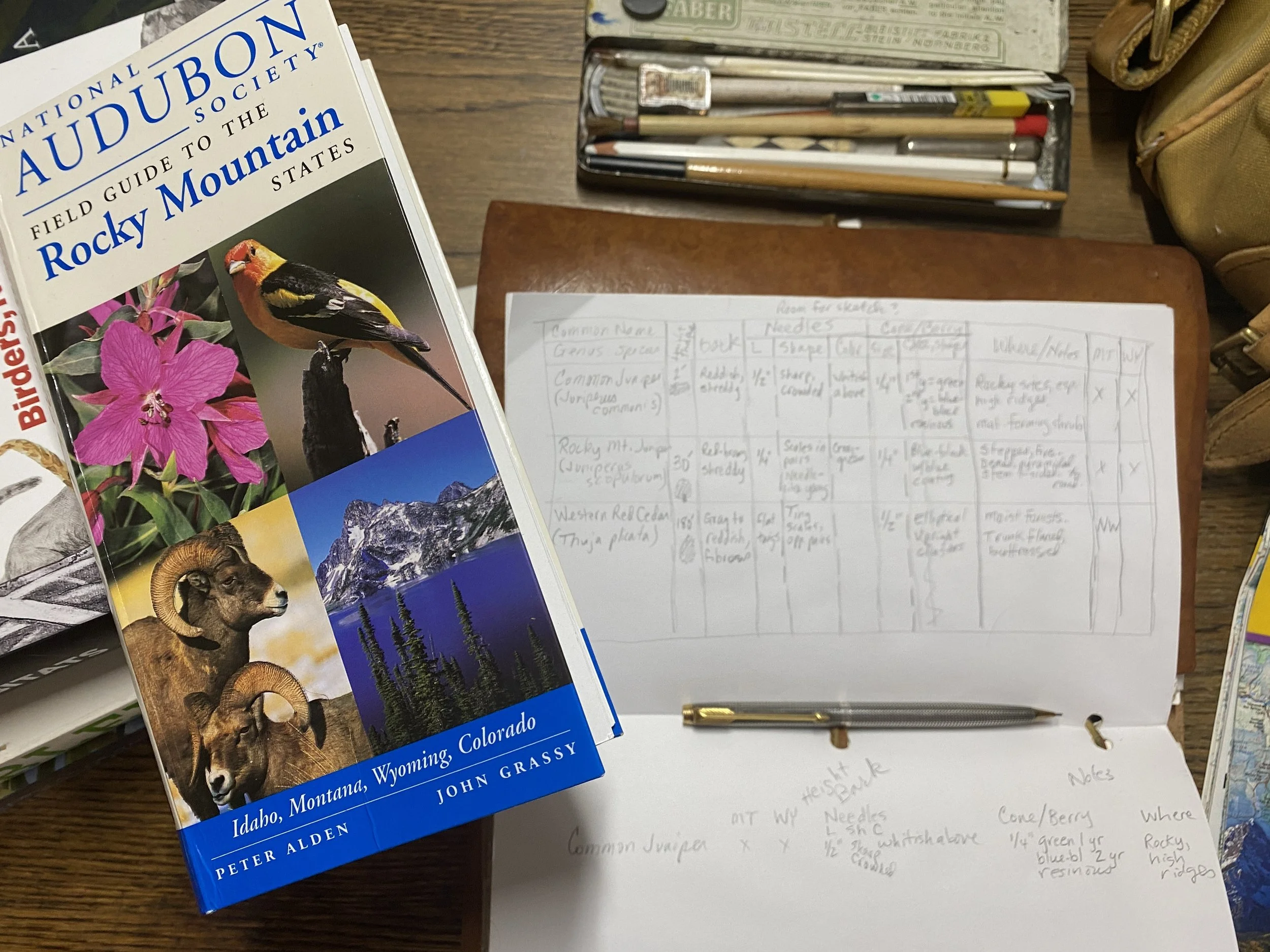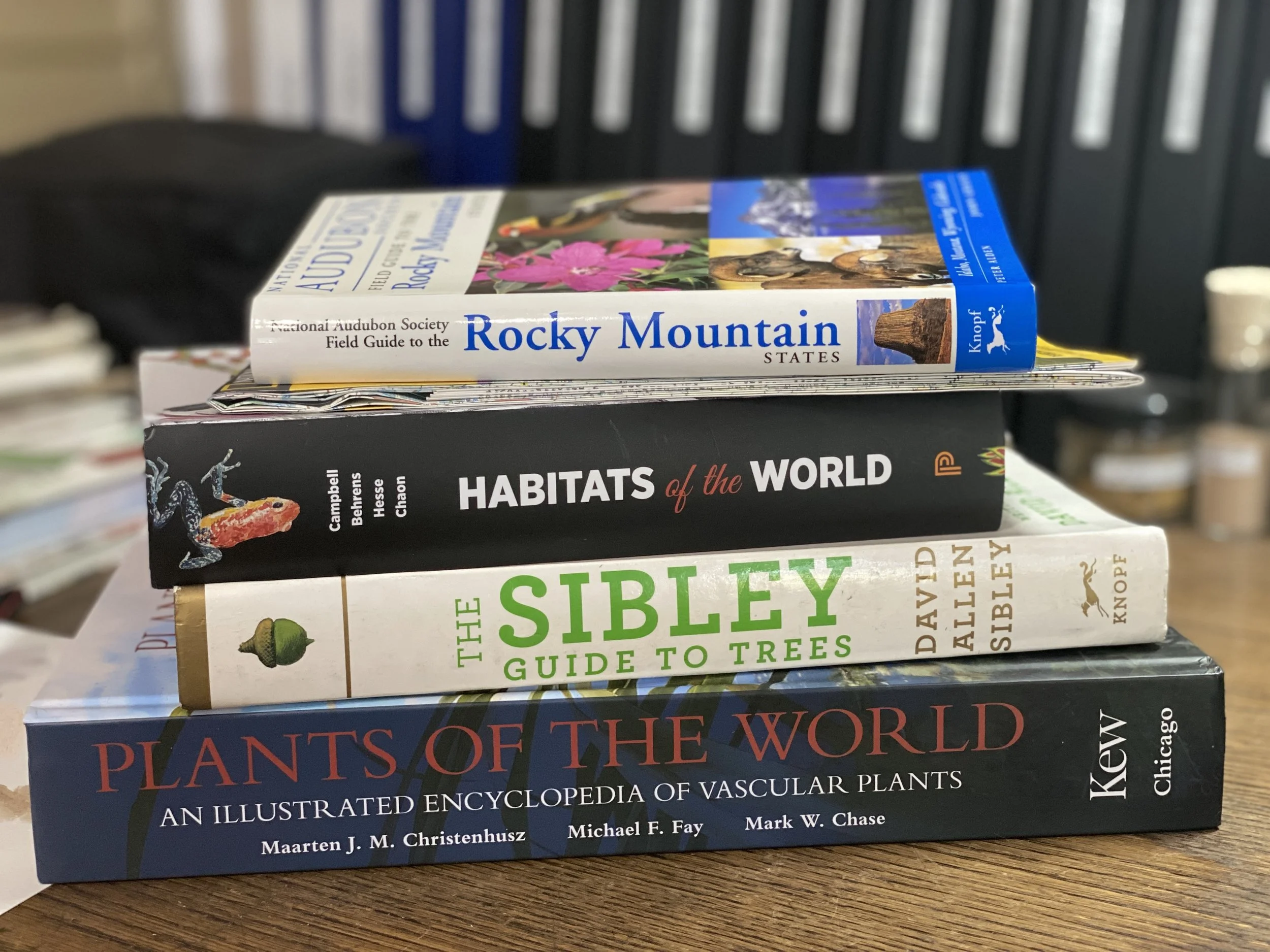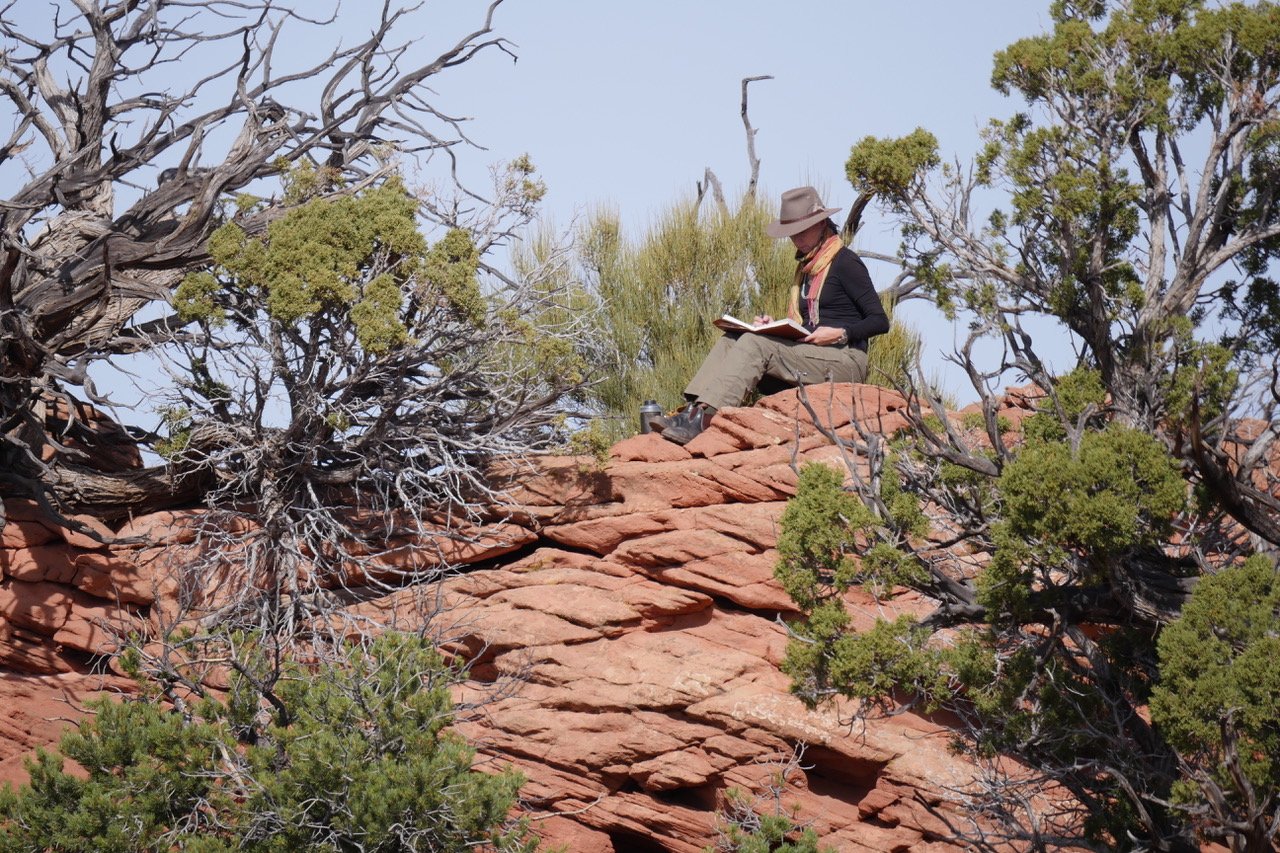Preparing for a field trip or expedition
I almost love preparing for a field trip or expedition more than the journey itself!
I’ve started prepping for the July 6–9 Wyoming Field Arts Bootcamp and thought I’d share here some of my research and organization methods I use to prepare for visiting a region that’s new to me. It’s like learning a new language, and I get so excited to start practicing that language in the field I can barely wait!
Where to start?
As a native desert dweller, I’m always a bit behind the curve on mountain plant species—especially gymnosperms (plants that produce exposed seeds, usually in cones rather than enclosed in an ovary). So that’s where I’ll start. Using the excellent overview National Audubon Society Field Guide to the Rocky Mountain States (Idaho, Montana, Wyoming, Colorado), I start surveying the plants in the gymnosperms, also called conifers: junipers, cedars, pines, spruces, larches, firs, hemlocks, and yew.
I check ranges to make sure which species are in the regions to which I’m traveling.
Then I make a practice chart in pencil in the back of my field notebook, where I always lash in 20 or so pages of copier paper for scribbles, thoughts, practice, etc. (see above).
Once I’m happy with the layout for my data chart, I re-create the chart in pen in my main journal. If it’s a long journey or scientific expedition, I would put all-new pages in the journal and put species lists and charts like this at the very front. For this journey, where I’ll be driving from Arizona to western Montana for the Northern Rockies Nature Journaling Conference and then east and south to the Bighorn Mountains for my Wyoming Field Arts Bootcamp, I just put the chart in line with my other pages rather than completely refresh the whole journal (I’m only halfway through my pages).
As I’m filling out my chart, if the Audubon guide doesn’t have sufficient information I’ll cross-reference to other excellent, more detailed guidebooks. The Sibley Guide to Trees is especially good, and the Plants of the World is astounding (also available as an online database via the Royal Kew Gardens website). The latter is not an ID guide but good for natural history information.
The act of surveying, researching, organizing, and making lists and charts really helps to solidify the nature “language” of a new place in your mind—in this case, conifers of the northern and middle Rocky Mountains.
The Wyoming Field Arts Bootcamp is going to be a magical time of deep discovery and learning. I’m purposefully not visiting the site ahead of the workshop (I’ve been in the Bighorn Mountains before, but about 10 years ago and it was a quick drive over the top, we didn’t stop).
This is so that we will all be exploring and discovering and learning together, and if you are new to journaling you will be able to see my own process for making entries in my field journal in a new place.
Next up: I’ll be making bird and wildflower lists, and probably a Wyoming geology cheat-sheet since the region is a marvel of exposed earth dynamics!




